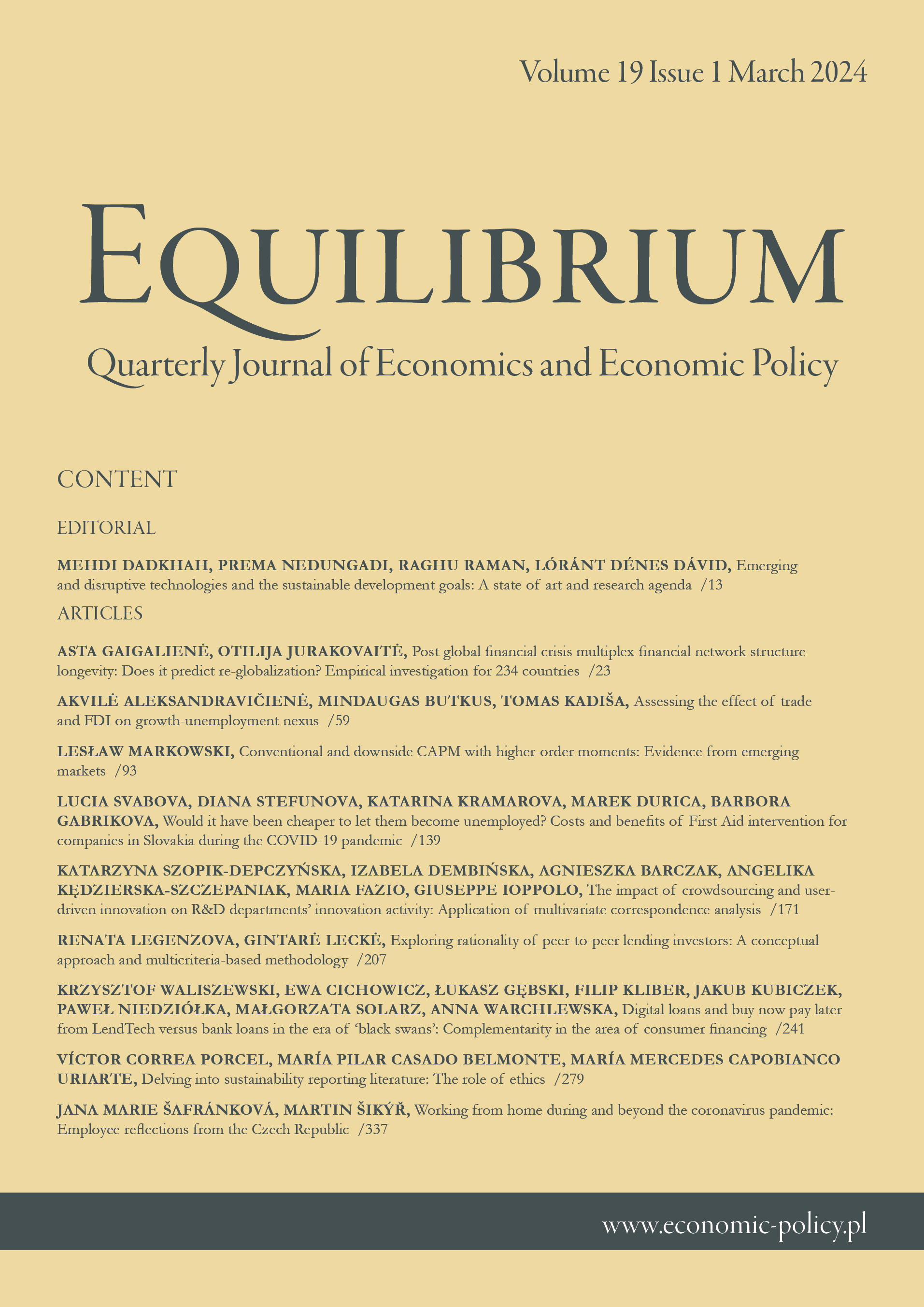基于ARIMA的选定欧洲国家新冠肺炎确诊病例动态预测
IF 5
Q1 ECONOMICS
Equilibrium-Quarterly Journal of Economics and Economic Policy
Pub Date : 2020-06-24
DOI:10.24136/eq.2020.009
引用次数: 91
摘要
研究背景:2020年3月11日,世界卫生组织(世界卫生组织)将新冠肺炎疫情确定为全球大流行。疫情规模的迅速增加导致了非药物对策的出台。预测新冠肺炎流行率是当局采取行动的一个基本要素。文章目的:文章旨在评估自回归综合移动平均(ARIMA)模型在预测新冠肺炎疫情不同阶段发病率动态方面的有用性,从疫情增长的第一阶段到最大日发病率,直到疫情消失的阶段。方法:ARIMA(p,d,q)模型用于预测多种疾病中病毒分布的动态。本文介绍了模型估计、预测和预测的准确性。研究结果和增值:使用ARIMA(1,2,0)模型预测疫情各个阶段新冠肺炎病例的动态,是评估实施的非药物对策对疫情动态的一种方式。本文章由计算机程序翻译,如有差异,请以英文原文为准。
ARIMA-based forecasting of the dynamics of confirmed Covid-19 cases for selected European countries
Research background: On 11 March 2020, the Covid-19 epidemic was identified by the World Health Organization (WHO) as a global pandemic. The rapid increase in the scale of the epidemic has led to the introduction of non-pharmaceutical countermeasures. Forecast of the Covid-19 prevalence is an essential element in the actions undertaken by authorities. Purpose of the article: The article aims to assess the usefulness of the Auto-regressive Integrated Moving Average (ARIMA) model for predicting the dynamics of Covid-19 incidence at different stages of the epidemic, from the first phase of growth, to the maximum daily incidence, until the phase of the epidemic's extinction. Methods: ARIMA(p,d,q) models are used to predict the dynamics of virus distribution in many diseases. Model estimates, forecasts, and the accuracy of forecasts are presented in this paper. Findings & Value added: Using the ARIMA(1,2,0) model for forecasting the dynamics of Covid-19 cases in each stage of the epidemic is a way of evaluating the implemented non-pharmaceutical countermeasures on the dynamics of the epidemic.
求助全文
通过发布文献求助,成功后即可免费获取论文全文。
去求助
来源期刊
CiteScore
9.20
自引率
3.50%
发文量
28
审稿时长
36 weeks
期刊介绍:
Equilibrium. Quarterly Journal of Economics and Economic Policy is a scientific journal dedicated to economics, which is the result of close cooperation between the Instytut Badań Gospodarczych/Institute of Economic Research (Poland) and Polish Economic Society and leading European universities. The journal constitutes a platform for exchange of views of the scientific community, as well as reflects the current status and trends of world science and economy.
The journal especially welcome empirical articles making use of quantitative methods in: Macroeconomics and Monetary Economics, International Economics, Financial Economics and Banking, Public Economics, Business Economics, Labor and Demographic Economics, Economic Development, and Technological Change, and Growth.
Current most preferable topics and special issues:
The economics of artificial intelligence: business potentials and risks;
Digitalization and entrepreneurship in economics;
Sustainable socio-economic development, environmental and ecological economics;
Transition in the energy market (improving energy efficiency, alternative energy sources, renewable energy, energy security).

 求助内容:
求助内容: 应助结果提醒方式:
应助结果提醒方式:


